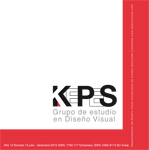Autores
Resumo
The article deals with consideration of the artistic-figurative and technical aspects of application of the technologies of “flexible chee” in the art of modern Kazakh tapestry. This technology was developed and called by the artist Mukanov Malik Floberovich, who attracts it in his author’s tapestries. He is also one of the co-authors of this article. Based upon example of the fine arts study of his tapestries the conclusion is made that the modern masters of the artistic textile must constantly search for the new figurative forms and means of the creative self-expression. At that the technological aspects of such searches must not become the end in itself of the creative expression, submitting to the main task on construction of the remembering national-original artistic image.
Referências
Barmankulova, B. (2010). In preface to catalogue “Alibui, Saule, Agyn, Ajia Bapanov”. Alma-Ata: Complex.
Batkin, L. (1978). Life and creativity of Jan Lurse. Soviet fine arts study, 2.
Chametzky, P. (2013). Will Grohmann: Text on Modern Art. Art bulletin, 3, 493- 498. Coll art assoc, New York.
Golan, A. (1992). Myth and symbol. Moscow: Russlit. pp. 52-62.
Gorelik, M. V. (1993). The weapon of Ancient East, IV millennium – IV century B.C. Moscow: Nauka. pp. 201-205.
Harle, R. (2014). The fourth dimension and non-euclidean geometry in modern art. Issue: 1. Cambridge: Mit press. pp. 100-101.
Margulan, A. Kh. (1986). The Kazakh National Applied Art. Volume I. Alma-Ata: Oner.
Polevoi, V. M. (1989). Twentieth century. Moscow: Sov. khudozhnik.

 pdf (Español (España))
pdf (Español (España))
 FLIP
FLIP





















